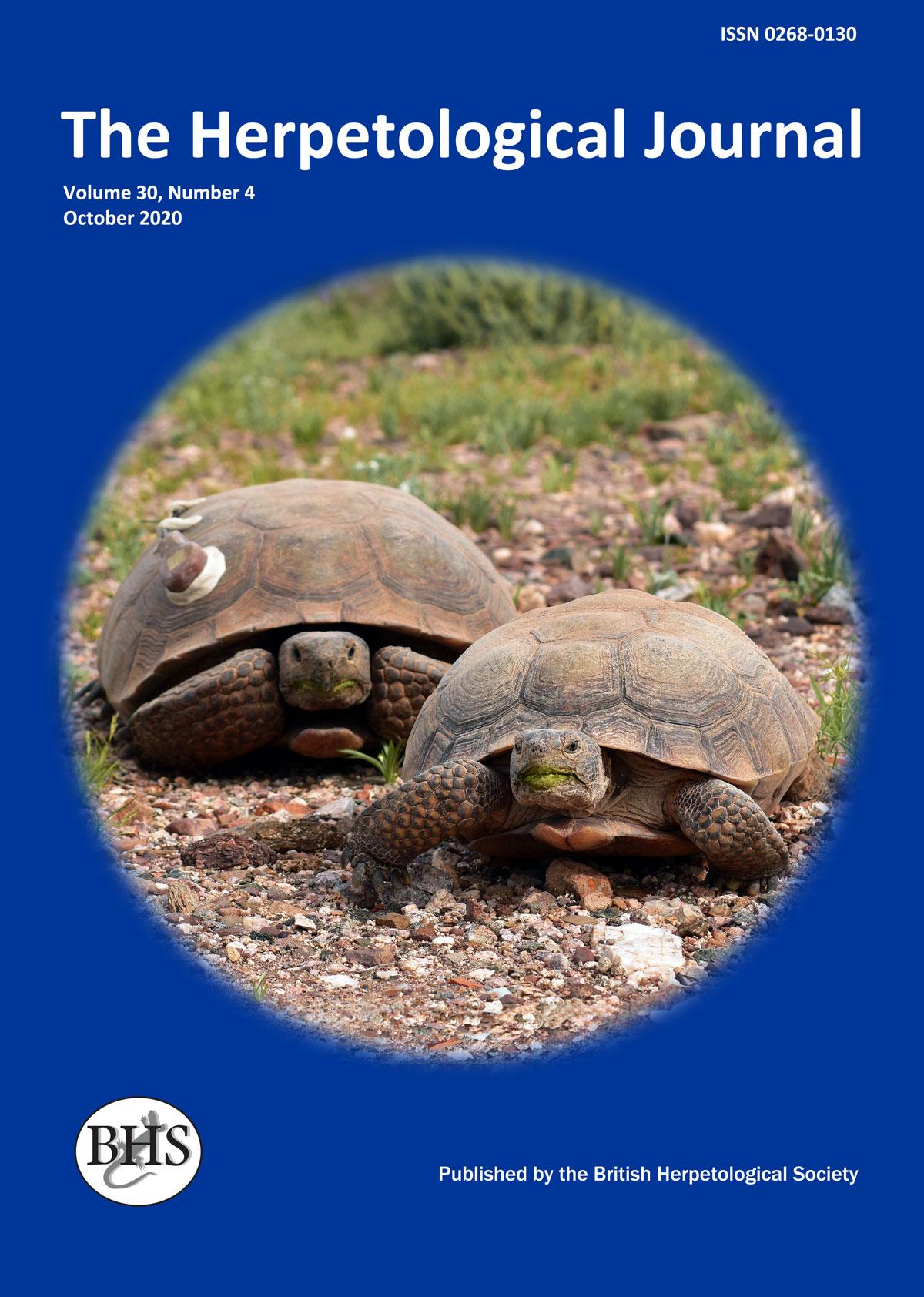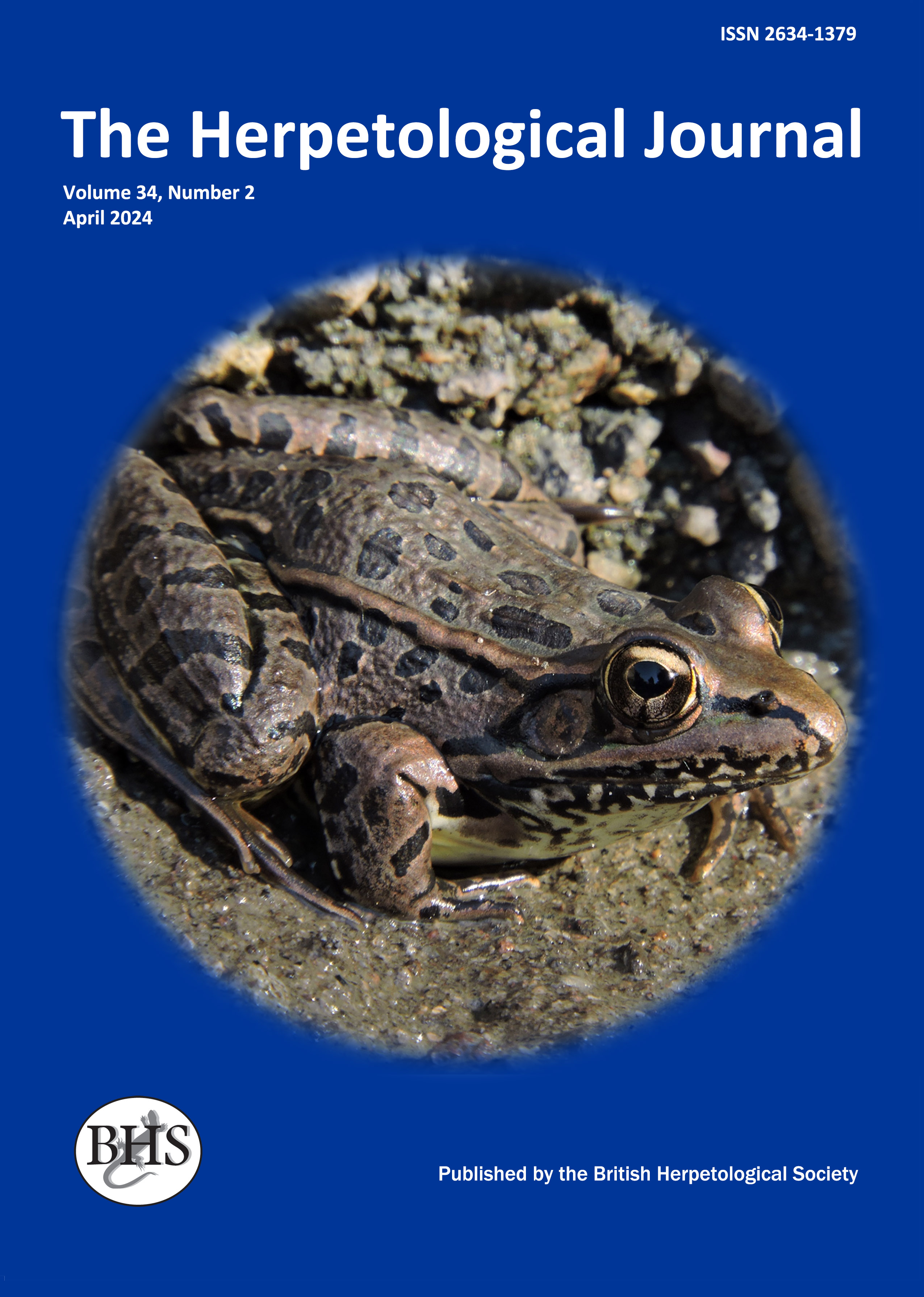Find by title or description…
Category
- The Herpetological Journal
- - Volume 27, Number 1, January 2017
- - Volume 26, Number 4, October 2016
- - Volume 26, Number 3, July 2016
- - Volume 26, Number 2, April 2016
- - Volume 26, Number 1, January 2016
- - Volume 25, Number 4, October 2015
- - Volume 25, Number 2, April 2015
- - Volume 25, Number 3, July 2015
- - Volume 25, Number 1, January 2015
- - Volume 24, Number 4, October 2014
- - Volume 24, Number 3, July 2014
- - Volume 24, Number 2, April 2014
- - Volume 24, Number 1, January 2014
- - Volume 23, Number 4, October 2013
- - Volume 23, Number 3, July 2013
- - Volume 23, Number 2, April 2013
- - Volume 23, Number 1, January 2013
- - Volume 22, Number 4, October 2012
- - Volume 22, Number 2, April 2012
- - Volume 22, Number 3, July 2012
- - Volume 22, Number 1, January 2012
- - Volume 21, Number 4, October 2011
- - Volume 21, Number 3, July 2011
- - Volume 21, Number 2, April 2011
- - Volume 21, Number 1, January 2011
- - Volume 20, Number 4, October 2010
- - Volume 20, Number 3, July 2010
- - Volume 20, Number 2, April 2010
- - Volume 20, Number 1, January 2010
- - Volume 19, Number 4, October 2009
- - Volume 19, Number 3, July 2009
- - Volume 19, Number 2, April 2009
- - Volume 19, Number 1, January 2009
- - Volume 18, Number 4, October 2008
- - Volume 18, Number 3, July 2008
- - Volume 18, Number 2, April 2008
- - Volume 18, Number 1, January 2008
- - Volume 17, Number 4, October 2007
- - Volume 17, Number 3, July 2007
- - Volume 17, Number 2, April 2007
- - Volume 17, Number 1, January 2007
- - Volume 16, Number 4, October 2006
- - Volume 16, Number 3, July 2006
- - Volume 16, Number 2, April 2006
- - Volume 16, Number 1, January 2006
- - Volume 15, Number 4, October 2005
- - Volume 15, Number 3, July 2005
- - Volume 15, Number 2, April 2005
- - Volume 15, Number 1, January 2005
- - Electronic appendices
- - Volume 27, Number 2, April 2017
- - Volume 27, Number 3, July 2017
- - Volume 27, Number 4, October 2017
- - Volume 28, Number 1, January 2018
- - Volume 1, Number 01, December 1985
- - Volume 1, Number 02, June 1986
- - Volume 1, Number 03, December 1986
- - Volume 1, Number 04, June 1987
- - Volume 1, Number 05, December 1987
- - Volume 1, Number 06, June 1988
- - Volume 1, Number 07, December 1988
- - Volume 1, Number 08, June 1989
- - Volume 1, Number 09, December 1989
- - Volume 1, Number 10, June 1990
- - Volume 1, Number 11, December 1990
- - Volume 1, Number 12, June 1991
- - Volume 2, Number 1, January 1992
- - Volume 2, Number 2, April 1992
- - Volume 2, Number 3, July 1992
- - Volume 2, Number 4, October 1992
- - Volume 3, Number 1, January 1993
- - Volume 3, Number 2, April 1993
- - Volume 3, Number 3, July 1993
- - Volume 3, Number 4, October 1993
- - Volume 4, Number 1, January 1994
- - Volume 4, Number 2, April 1994
- - Volume 4, Number 3, July 1994
- - Volume 4, Number, 4 October 1994
- - Volume 5, Number 1, January 1995
- - Volume 5, Number 2, April 1995
- - Volume 5, Number 3, July 1995
- - Volume 5, Number 4, October 1995
- - Volume 6, Number 1, January 1996
- - Volume 6, Number 2, April 1996
- - Volume 6, Number 3, July 1996
- - Volume 6, Number 4, October 1996
- - Volume 7, Number 1, January 1997
- - Volume 7, Number 2, April 1997
- - Volume 7, Number 3, July 1997
- - Volume 7, Number 4, October 1997
- - Volume 8, Number 1, January 1998
- - Volume 8, Number 2, April 1998
- - Volume 8, Number 3, July 1998
- - Volume 8, Number 4, October 1998
- - Volume 9, Number 1, January 1999
- - Volume 9, Number 2, April 1999
- - Volume 9, Number 3, July 1999
- - Volume 9, Number 4, October 1999
- - Volume 10, Number 1, January 2000
- - Volume 10, Number 2, April 2000
- - Volume 10, Number 3, July 2000
- - Volume 10, Number 4, October 2000
- - Volume 11, Number 1, January 2001
- - Volume 11, Number 2, April 2001
- - Volume 11, Number 3, July 2001
- - Volume 11, Number 4, October 2001
- - Volume 12, Number 1, January 2002
- - Volume 12, Number 2, April 2002
- - Volume 12, Number 3, July 2002
- - Volume 12, Number 4, October 2002
- - Volume 13, Number 1, January 2003
- - Volume 13, Number 2, April 2003
- - Volume 13, Number 3, July 2003
- - Volume 13, Number 4, October 2003
- - Volume 14, Number 1, January 2004
- - Volume 14, Number 2, April 2004
- - Volume 14, Number 3, July 2004
- - Volume 14, Number 4, October 2004
- - Volume 28, Number 2, April 2018
- - Volume 28, Number 3, July 2018
- - Volume 28, Number 4, October 2018
- - Volume 29, Number 1, January 2019
- - Volume 29, Number 2, April 2019
- - Volume 29, Number 3, July 2019
- - Volume 29, Number 4, October 2019
- - Volume 30, Number 1, January 2020
- - Volume 30, Number 2, April 2020
- - Volume 30, Number 3, July 2020
- - Volume 30, Number 4, October 2020
- - Volume 31, Number 1, January 2021
- - Volume 31, Number 2, April 2021
- - Volume 31, Number 3, July 2021
- - Early Publication
- - Volume 31, Number 4, October 2021
- - Volume 32, Number 1, January 2022
- - Volume 32, Number 2, April 2022
- - Volume 32, Number 3, July 2022
- - Volume 32, Number 4, October 2022
- - Volume 33, Number 1, January 2023
- - Volume 33, Number 2, April 2023
- - Volume 33, Number 3, July 2023
- - Volume 33, Number 4, October 2023
- - Volume 34, Number 1, January 2024
- - Volume 34, Number 2, April 2024
Tags
Open Access
Search
Reset



